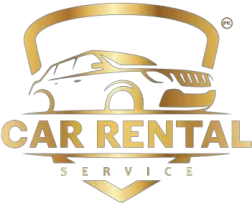The Toyota Corolla Altis has earned its reputation for reliability and fuel efficiency in the compact sedan segment. Since its introduction, it has become a top choice for both private owners and rental fleets. In this Toyota Corolla Altis Fuel Average and Real Mileage Review, we compare manufacturer claims with owner-reported data, explore the variables that influence fuel consumption, and offer practical tips for maximizing efficiency. Whether you plan to rent a car in Lahore for daily errands or long drives, understanding these figures will help you budget accurately.
Engine and Performance
The Altis’s 1.6 L 3ZZ-FE petrol engine features Dual VVT-i technology to optimize valve timing for both power and economy. It generates about 110 hp and 144 Nm of torque, delivering smooth acceleration in both manual and automatic variants. The 5-speed manual offers direct driver engagement, while the 4-speed Super ECT automatic keeps the engine in its most efficient RPM band under light loads.
Official Fuel Economy
According to ARAI certification, the Corolla Altis petrol manual achieves 16.7 km/l on standardized test cycles, while Toyota’s 6.5 L/100 km figure equates to about 15.4 km/l. These laboratory conditions assume minimal traffic, ideal road surfaces, and factory-fresh maintenance. In real-world conditions—where driving patterns and road quality vary—official numbers serve as a useful benchmark rather than an everyday expectation.
Real-World Mileage
Owners in urban centers consistently report lower city figures. In heavy traffic, an Altis automatic may drop to 8.5–9 km/l, while smoother suburban routes can yield 11–12 km/l. Maintaining a steady 80–100 km/h on the motorway often pushes the economy closer to 14–15 km/l, with CVT-equipped Grande variants occasionally touching 15 km/l. These real figures underscore why customers who rent a car in Karachi with a driver should factor in varying urban and highway consumption when planning fares.
Factors Influencing Fuel Economy
Several key variables explain the gap between laboratory tests and daily drives:
- Driving Style: Aggressive acceleration and hard braking can reduce mileage by up to 20%, whereas smooth throttle inputs safeguard fuel.
- Maintenance: Fresh engine oil, clean air filters, and properly gapped spark plugs maintain combustion efficiency. Neglected service can drop city mileage to 7–9 km/l.
- Traffic Conditions: Prolonged idling in rush-hour traffic lowers urban averages by 1–2 km/l. Off-peak travel can regain those lost kilometers.
- Load and Aerodynamics: Heavy cargo, roof racks, and full passenger loads increase drag and weight, reducing economy by roughly 5–10%.
Tips to Maximize Efficiency
- Maintain Tire Pressure at around 33 psi front and 30 psi rear to minimize rolling resistance.
- Use Smooth Acceleration: Ease into the throttle to stay in the engine’s optimal torque band.
- Minimize Cold Starts: Combine multiple errands into one trip so the engine stays warm.
- Limit AC Use at lower speeds; open windows instead below 60 km/h, then close them on highways to reduce drag.
- Follow Service Intervals precisely to avoid neglect-induced mileage drops.
Rental Service Perspective
If you rent a car in Gulshan-e-Iqbal—one of Karachi’s busiest neighborhoods—a typical 100 km city outing at an average of 9 km/l will consume about 11 L of fuel. This helps you set accurate fuel surcharges and avoids surprises when billing clients.
When you rent a car in Lahore for a mixed city-highway trip, the Altis’s combined average of roughly 12 km/l means a 200-km journey uses around 16.7 L of fuel. Communicating these estimates sets clear expectations, avoids disputes, and ensures accurate planning for both customers and your rental fleet.
Conclusion
The Toyota Corolla Altis remains a top choice for its balance of comfort, reliability, and fuel economy. While ARAI figures of 16.7 km/l (city) and 15.4 km/l (highway) provide optimistic benchmarks, real-world averages of 8.5–15 km/l reflect the impact of driving conditions and habits. By understanding these dynamics and adopting efficiency-focused practices, owners and renters can make the most of each litre on daily commutes or extended road trips.





